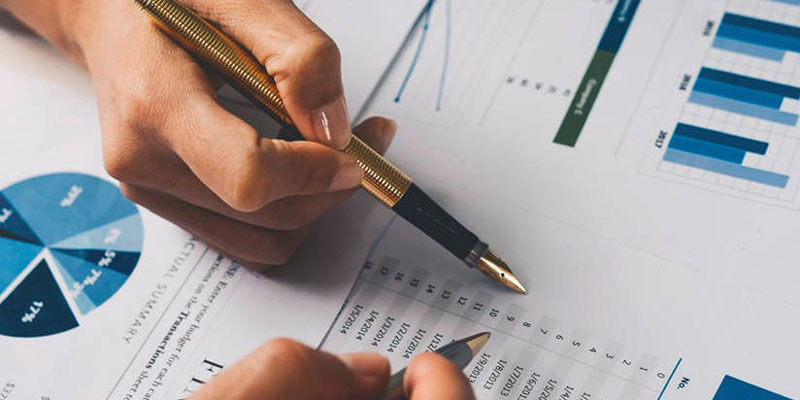A Guide To Keeping Track of Your Account Balance
Nov 12, 2022 By Triston Martin
Keeping track of your checking account balance is one of the most fundamental and crucial financial skills you can acquire. Avoiding an overdraft is a vital part of sound financial management. Although the ATM's display of your current available amount may seem trustworthy, it is not necessarily reflective of your actual financial standing.
Remember that even if your debit card transaction is accepted, it still doesn't guarantee that there's enough money in your account to fund the purchase. Keeping track of your checking account may seem tedious, but it's relatively easy to do.
It's not too time-consuming, anyway, if you make it a practice to do it daily or weekly. Whether you like to use paper and ink, an app, or an Excel sheet, there are a variety of ways to monitor your finances and stay on top of your balance.
Maintain an Expense Record in Your Account Ledger

In the beginning, a bank ledger is required. Each set of checks is accompanied by a little booklet serving as an account ledger. Date and transaction name can be recorded on the left side of the ledger. The check number and the payee's name should be written down. When keeping track of debit card purchases, it's important to note the retailer name, purchase date, and total.
Enter as much information as you can remember, and keep track of your spending as you go. Don't put it off too long, otherwise you risk forgetting to include them or misremembering facts like the precise amount or check number.
Maintain a Detailed Ledger of All Business Deals
In light of this, it is crucial that all financial dealings be recorded immediately after they are completed. For debit entries, use the check ledger's right side, together with the relevant date and monetary value, to keep track of everything.
When documenting a debit transaction, the economic value is noted in the column to the right of the transaction description. It's also a good idea to keep track of any costs. After entering the transaction's monetary value, the amount must be subtracted from the running total on the far right side of the book.
Keep a calculator on you at all times, or schedule a weekly assessment of your math skills. Computer software or an iPhone app will automatically calculate the results for you.
Advantages of Maintaining Your Running Balance

Keeping your books in the black may help you in a number of ways. This is highly pertinent to bank accounts. It is crucial for a company to always be aware of its current account balance. The firm is able to more effectively plan for payment due dates. Also, it helps businesses avoid fines by meeting the minimum balance requirements.
The company may double-check all the money in and out of the account. If the company's goal is to reduce the debt amount or to maintain the debt amount below a certain level, then monitoring the RB is also crucial.
A bank account makes it easier to confirm credit card purchases with actual payments. In addition, the cardholder may see their current balance or how much available credit they have left before they reach their limit.
Identify The Nature and Cost of Each Transaction
The amount of a deposit should be included in the "deposit amount" column, along with a brief description of the deposit's origin. The sum will then be tallied with your open balance. Using a computer software or app designed for personal finance can eliminate the need for mathematical calculations. The cash register can also be set up to automatically record deposits made on a regular basis.
Record All Recurring Bills And Payments In Your Books
When keeping a manual ledger, it's easy to lose track of scheduled payments and transfers. Just gather together all of your receipts and bank statements and enter them into your computer at the start of the month.
This can help you avoid going into an overdraft situation later in the month due to excessive spending. Is there any additional advice you can give? Automatic transfers and withdrawals can be timed to coincide with your payday, making it easier to remember to record them.
To What Extent Can Accuracy Be Guaranteed?
Providing precise data is the most excellent method to guarantee a reliable RB. The running balance will be correct if all the numbers, debits, and credits you input are correct. Subtracting the total on the credit side from the total on the debit side is another method of gauging the precision at any given time.
The final sum must coincide with the available funds. These days, creating a running balance in your books is a breeze thanks to accounting software. The financial statements may then be generated with the aid of this program. Excel also allows you to simply keep track of your account balance.








